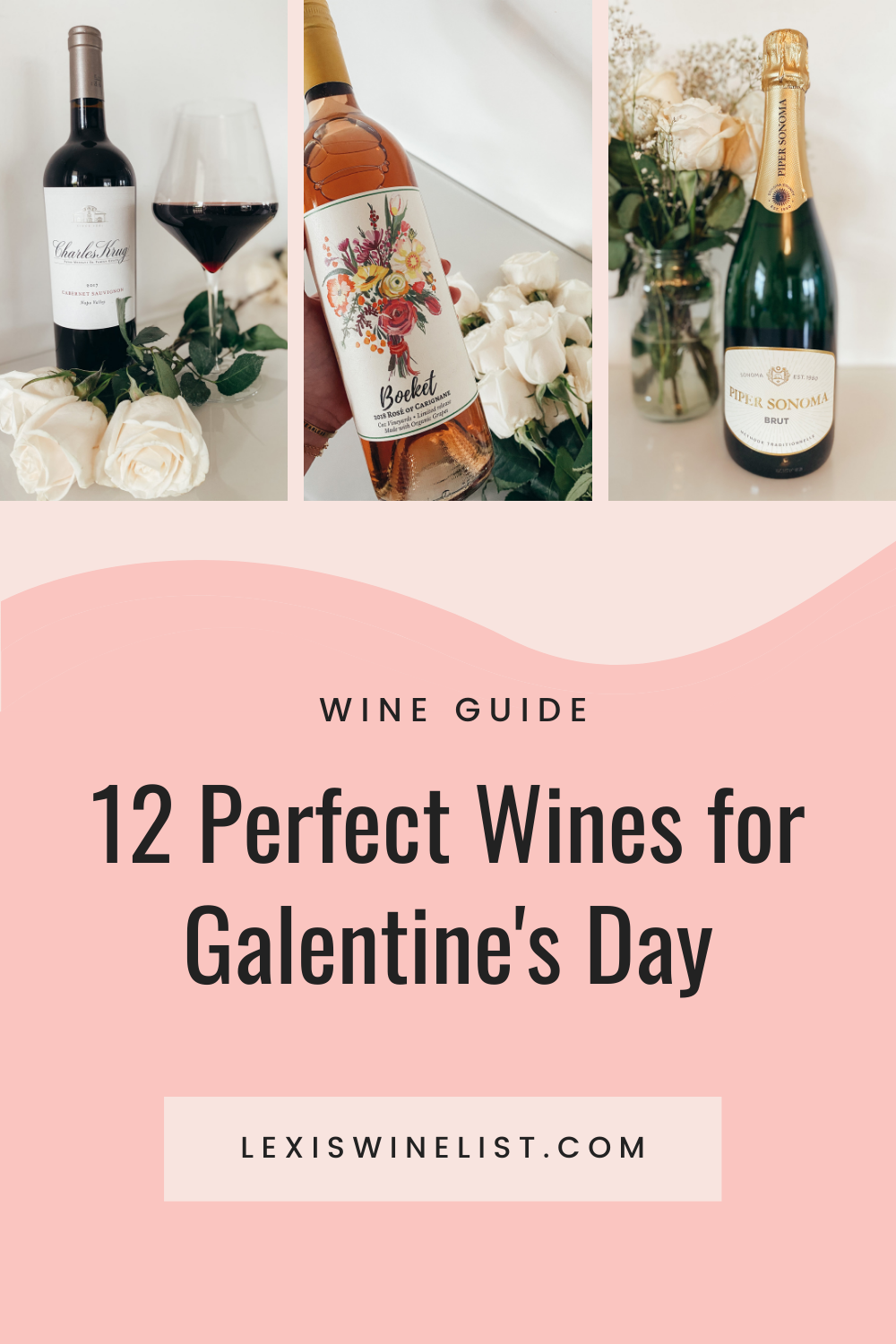8 Charming Towns to Visit in Tuscany, Italy
Sprawling the rolling hills from Florence to Siena, Tuscany’s wine country has much more to offer than just wine. This captivating region is home to the most charming towns in all of Italy, boasting medieval and gothic architecture, must-see shops and restaurants, and unbeatable views of the Val d’Orcia and beyond.
As a wine lover and traveler, I’ve been lucky to visit Tuscany a handful of times to explore its iconic wineries and historic villages. If you’re visiting Tuscany for a wine trip, you can’t miss a few stops in these enchanting small towns.
From hidden gems to classic must-sees, these Tuscan towns will complete the perfect itinerary blend of history, beauty, and local flavor for your next trip to Italy’s stunning wine country.
PSA: I host a wine retreat in Tuscany every year and we’ll be back in October 2026! Get your name on the waitlist and receive more information by filling out this quick form here.
8 Charming Towns to Visit in Tuscany, Italy
While these Tuscan towns are all located in the same region of Italy, they each have their own unique flares, historical imprints, and reasons for visiting. You can absolutely spend a few days in each location, but many listed here are small enough to explore in just one afternoon.
Dive into this guide for a list of the top towns to visit on your next trip to Tuscany.
By the way, I’ve partnered with two incredible Italian women to curate private tours in and around Florence, Tuscany, and Rome. From food tours and wine tasting in the city, to Chianti vineyard day trips and farm cooking classes, there’s something for everyone. Check out our expertly curated food and wine lover tours here.
Note: This post contains some affiliate links that if clicked on and used to purchase wine may pay me a small commission at no extra cost to you. Thank you for your support!
1. Greve in Chianti
If you’re looking to escape the bustling crowds of Florence, Greve in Chianti is an easy day trip, located just about a 40-minute drive away.
With history dating back to Etruscan times, Greve in Chianti is a one-piazza town, with small restaurants and bars dotting the outskirts. Be sure to admire the charcuterie selection at Antica Macelleria Falorni, a classic butcher with loads of cured meats hanging from the ceiling and an entire cellar dedicated to local cheeses. You can also enjoy a self-service tasting of local wines from the taps.
Enjoying a spritz at a local bar in Piazza Matteotti is also a perfect way to spend an afternoon in Greve in Chianti.
2. Montepulciano
One of the most famous wine towns of Tuscany, Montepulciano is perched atop a hill in the southern part of the region. It served as a cultural hub during the Renaissance, and its iconic medieval architecture makes it a historic gem.
Montepulciano is most famous for its Vino Nobile di Montepulciano, a wine made from mostly Sangiovese (here it’s known as Prugnolo Gentile). As implied by the name, this wine was crafted specially for the nobles and still carries the weight of being one of the most classic and best expressions of Italian wine.
Montepulciano is also a great place for browsing authentic Italian leather goods, with plenty of leather shops throughout the city.
My advice is to start at the bottom of the hill, the entrance to the town, and slowly make your way uphill (note: it’s a very steep hill), stopping at leather stores and wine bars along the way. When you get to the top, you’ll be rewarded with stunning views of the surrounding Tuscan countryside.
3. San Quirico d’Orcia
Tucked into the hills of the Val d'Orcia (known as the most beautiful part of Tuscany), San Quirico d’Orcia was founded by the Etruscans and has been inhabited since before the 8th century. It served as a crucial stop on Via Cassia, an important Roman road, and it later held strategic importance during the Middle Ages.
In classic medieval fashion, this town is built of narrow streets, quaint churches, and historic Romanesque buildings. Like any Tuscan town, San Quirico d’Orcia has an annual competition known as the Festa del Barbarossa, where locals are challenged to archery competitions and traditional dishes are served with local wines throughout the city. If you visit during the summer, you might see the flags of the quarters, or districts, decorating the historic buildings, adding even more charm to this setting.
I’d recommend stopping for lunch at Ristorante Trattoria Osenna, where you can taste local specialties like pici all'aglione (a thick, spaghetti-like pasta with tomato garlic sauce).
4. Siena
While it may be one of the more famous (and therefore more crowded) cities in Tuscany, Siena is still a must visit during your next trip to central Italy. It flourished as a powerful and independent republic from the 12th to the 15th centuries, constantly dueling with Florence for power over the region.Today, Siena is known for its traditional medieval architecture and artistic achievements by Italian icons during the Renaissance.
Its traditional Palio horse race takes place twice annually in the Piazza del Campo and dates back to the 13th century. During this festival, locals and tourists crowd the shoulders of the piazza, rooting for their chosen contrada - a rivalry that’s bigger than any American football fandom. While this is surely a once-in-a-lifetime spectacle, I’d recommend visiting outside of July and August if you’re trying to avoid massive crowds.
Siena Cathedral and the iconic Piazza del Campo are must-sees here. And if you’re into religious relics, you can pop into Basilica San Domenico to see Saint Catherine of Siena’s head (yes, it is her actual head).
For an afternoon delight, I recommend a stop into Pizzicheria de Miccoli for a cheese and charcuterie plate paired with Tuscan wine. If you’re interested in a culinary adventure, try the boar prosciutto, a local delicacy.
And if you’re looking for an authentic leather jacket, De Nicola Pelletteria has a great selection of high quality leather goods for reasonable prices.
5. Florence
The vibrant capital of Tuscany, Florence was founded by the Romans in the first century BC and is renowned for its profound impact on art, culture, and politics during the Renaissance. The 14th century brought the infamous Medici family to power, transforming Florence into a powerful city-state.
One of the most important hubs for art in the world, icons like Leonardo da Vinci, Michelangelo, and Botticelli created masterpieces here. The Duomo, Uffizi Gallery, and Ponte Vecchio are just a few of the must-see attractions this incredibly stunning city has to offer.
Note: While many of the Tuscan towns listed in this post are quaint and can be accomplished in one day, I recommend basing yourself in Florence for at least three days to get the most out of your visit.
After spending a semester abroad here, I have far too much to say about Florence to keep this succinct, so stay tuned for a full food and wine guide to my favorite city coming soon.
6. Pienza
Most famous for its pecorino (sheep’s milk cheese), Renaissance buildings, and sweeping views of the Val d’Orcia, Pienza is a gorgeous hilltop town that’s often referred to as the “Ideal City”.
The town was transformed during the 15th century under the papacy of Pope Pius II, who sought to create a model of Renaissance architecture and design. Renaissance principles of symmetry and proportion are expertly displayed in the Piazza Pio II, and the entire town itself has been named a UNESCO World Heritage Site for its role in establishing Renaissance urbanism.
For a beautiful and classic lunch featuring local ingredients, Beccofino is a must. Be sure to try their traditional Pientina soup, featuring beans and the famous Pecorino sheep’s milk cheese.
For a less traditional meal (think: gourmet burgers and smoking cocktails) and incredible views, snag a table on the patio at Idyllium.
Be sure to stop into a handful of pecorino shops to taste their offerings and bring a vacuum-sealed wedge, or two, home.
7. Cortona
You may recognize this Tuscan town as the setting of the book and movie, Under the Tuscan Sun (P.S. If you notice a particular fountain is missing, it’s because it was just added for the set of the movie and removed shortly after filming).
Cortona is a hub of Etruscan history, with its story dating back over 3,000 years. Before coming under Roman control, Cortona served as an important location along ancient trade routes. The Middle Ages brought conflicts, but also established the town’s prominence in politics.
Cortona’s medieval-style narrow streets and historic buildings contribute to the overall charm of this town. You can admire the Romanesque Cathedral of Cortona, its well-preserved city walls, and amazing views of the Tuscan countryside.
I recommend a casual lunch and glass of wine at a family-owned establishment and local favorite, Enotria. Or for a delicious Michelin meal, Osteria del Teatro is incredible for traditional pasta recipes, wine, and seafood.
For gelato, stop by Gelato Ti Amo.
8. Montefollonico
Like most of the towns listed here, Montefollonico’s history is traced back to Etruscan times. It was established as a strategic outpost and trading center during the Middle Ages and still boasts its ancient city walls and well-preserved medieval structures.
This tiny, hilltop village is a quintessential historic Italian gem. Strolling through the narrow streets and admiring the stone buildings emulates the feeling of being on a movie set - an authentic Tuscan experience.
There may not be too much going on here, but it’s worth a stop to visit one of my favorite wineries in Tuscany, Cantine Innocenti. This family-owned, boutique winery crafts Vino Nobile di Montepulciano and Vin Santo (a sweet dessert wine) in a 13th century building. The historic cellar is incredible, but the views from the secret garden in the back are absolutely insane. Enjoy a tasting here with one of the family members while taking in the vast hillsides of the Montepulciano region below.
Be sure to save this map of the best towns to visit in Tuscany for easy navigating!
I hope this guide helps you plan a magical trip around Tuscany! If you have any other favorite towns in Tuscany, feel free to let me know in the comments, so I can visit on my next trip.
Remember to check out my curated food and wine tours around Florence and Rome here.
If you enjoyed this post, check out my top ten tips for planning your next trip to Tuscany or my ultimate travel guide to Tuscany, including the best wineries, restaurants, and hotels.
And if you’re interested in joining my next wine retreat, we’re heading to Sicily in April 2026 and Tuscany in October 2026! Get more info here.
Ready to further your wine education? Enroll in a WSET class today and use code LexiStephens for a discount.
If you liked this post, pin it to Pinterest!





























